chapter 7: external economies of scale and the international location of production
1/47
There's no tags or description
Looks like no tags are added yet.
Name | Mastery | Learn | Test | Matching | Spaced |
|---|
No study sessions yet.
48 Terms
the models of comparative advantage thus far assumed constant returns to scale:
when inputs to an industry increase at a certain rate, output increases at the same rate
if inputs were doubled, output would double as well
increasing returns to scale or economies of scale:
means that when inputs to an industry increase at a certain rate, output increases at a faster rate
a larger scale is more efficient: the cost per unit of output falls as a firm or industry increases output
the presence of economies of scale may be seen from the fact that
doubling the input of labor more than doubles the industry’s output
the average amount of labor used to produce each widget is less when the industry produces more
relationship of input to output for a hypothetical industry (table)
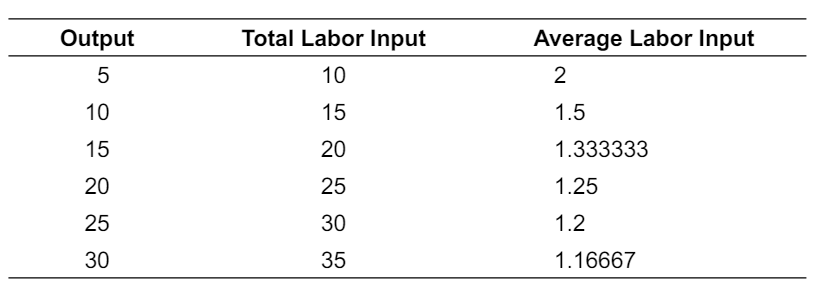
mutually beneficial trade can arise as a result of
economies of scale
international trade permits each country to produce a limited range of goods without
sacrificing variety in consumption
a country can take advantage of economies of scale to produce more efficiently than if it tried to produce everything for itself due to
trade
external economies of scale
occur when cost per unit of output depends on the size of the industry
internal economies of scale
occur when cost per unit of output depends on the size of the firm
both internal and external economies of scale are
important causes of international trade
external economies implications for the structure of industries
will typically consist of many small firms and be perfectly competitive
internal economies implications for the structure of industries
when large firms have a cost advantage over small firms, causing the industry to become imperfectly competitive
modern examples of industries that seem to be powerful external economies
in the United States
semi-conductor industry in Silicon Valley
investment banking in New York
entertainment industry in Hollywood
in developing countries such as China, external economies are pervasive in manufacturing
one town in China produces most of the world’s underwear, another nearly all cigarette lighters
external economies played a key role in India’s emergence as a major exporter of information service
indian information services companies are still clustered in Bangalore
external economies may exist for a few reasons
specialized equipment or services
labor pooling
knowledge spillovers
for a variety of reasons, concentrating production of an industry’s in one or a few locations can reduce
the industry’s cost, even if the individual firms in the industry remain small
specialized equipment or services
may be needed for the industry, but are only supplied by other firms if the industry is large and concentrated
labor pooling
a large concentrated industry may attract a pool of workers, reducing employee search and hiring costs for each firm
knowledge spillovers
workers from different firms may more easily share ideas that benefit each firm when a large and concentrated industry exists
forward-falling curve
the larger industry’s output, the lower the price at which firms are willing to sell
external economies (graph)
AC can be interpreted as a forward-falling supply curve. as in ordinary supply-and-demand analysis, market equilibrium is at point 1, where the supply curve intersects the demand curve, D. the equilibrium level of output is Q1, the equilibrium price P1

prior to international trade, equilibrium prices and output for each country would be
at the point where the domestic supply curve intersect the domestic demand curve
external economies before trade (graph)
in the absence of trade, the price of buttons in China, PCHINA, is lower than the price of buttons in the United States, PUS
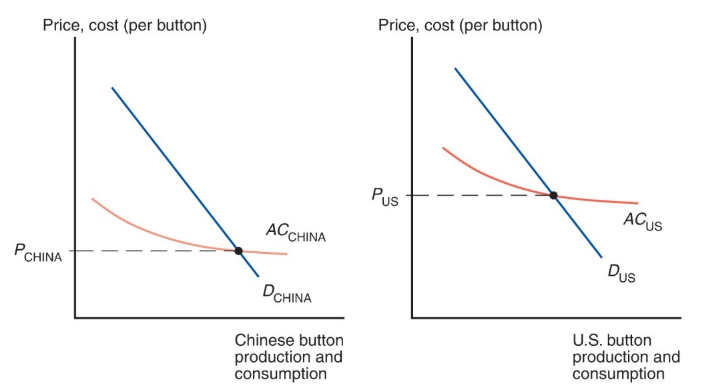
trade leads o prices that are lower than
the prices in either country before trade
in the standard trade model relative prices converge as a result of
trade
with external economies, by contrast, the effect of trade is to reduce
prices everywhere
trade prices (graph)
when trade is opened, China ends up producing buttons for the world market, which consists both of its own domestic market and of the U.S. market. output rises from Q1 to Q2, leading to a fall in the price of buttons from P1 to P2, which is lower than the price of buttons in either country before trade
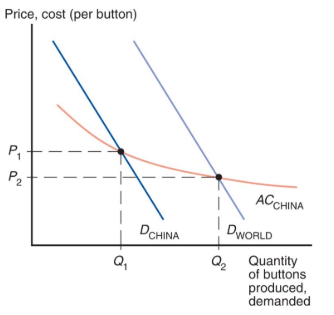
what might cause one country to have an initial advantage from having a lower price
one possibility is comparative advantage due to underlying differences in technology and resources
if external economies, however, the pattern of trade could be due to
historical accidents
no guarantee that the right country will produce a good that is
subject to external economies
the importance of established advantage (graph)
the average cost curve for Vietnam, ACVIETNAM, lies below the average cost curve for China, ACCHINA. thus Vietnam could potentially supply the world market more cheaply than China. if the Chinese industry gets established firs, however, it may be able to sell buttons at the price P1, which is below the cost C0 that an individual Vietnamese firm would face it began production on its own. So, a pattern of specialization established by historical accident may persist even when new producers could potentially have lower costs
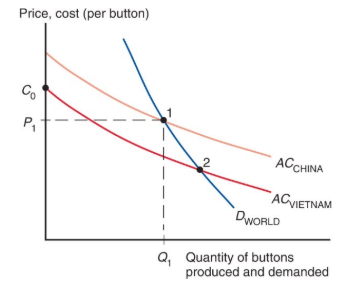
trade based on external economies has an ambiguous effect on
national welfare
there will be gains to the world economy by
concentrating production of industries with external economies
it’s possible that a country is worse off with trade that it would have been without trade:
a country may be better off if it produces everything for its domestic market rather than pay for imports
external economics and losses from trade (graph)
when there are external economies, trade can potentially leave a country worse off than it would be in the absence of trade. in this example, Thailand imports watches from Switzerland, which is able to supply the world market (DWORLD) at a price (P1) low enough to block entry to Thai producers, who must initially produce the watches at cost C0. yet if Thailand were to block all trade in watches, it would be able o supply its domestic market (DTHAI) at the lower price, P2
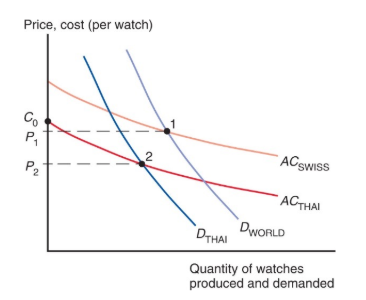
external economies may also depend on the amount of
cumulative output over time
dynamic increasing returns to scale exist if
average costs fall as cumulative output over time rises
dynamic increasing returns to scale imply dynamic external economies of scale
dynamic increasing returns to scale could arise if the cost of production depends
on the accumulation of knowledge and experience, which depend on the production process over time
learning curve
a graphical representation of dynamic returns to scale
the learning crve
the learning curve shows that unit cost is lower the greater the cumulative output of a country’s industry to date. a country that has extensive experience in an industry (L) may have a lower unit cost than a country with little or no experience, even if that second country’s learning curve (L*) is lower - for example, because of lower wages
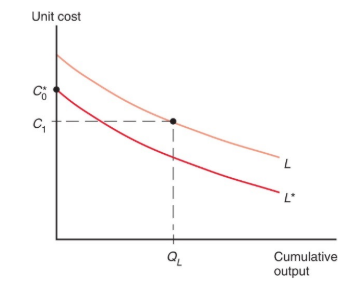
infant industry argument
temporary protection of industries enables them to gain experience
interregional trade
trade taking place among different regions and different states within the frontiers of a country
some non-tradeable goods must usually be
supplied locally
if external economies exist, the pattern of trade may be due to historical accidents:
regions that start as large producers in certain industries tend to remain large producers even if another region could potentially produce more cheaply
some examples of tradable and non-tradable industries (table)

economic geography
refers to the study of international trade, interregional trade and the organization of economic activity in metropolitan and rural areas
economic geography studies how humans transact with each other across space
communication changes such as the internet, email, text mail, video conferencing, mobile phones (as well as modern transpiration) are changing how humans transact with each other across space